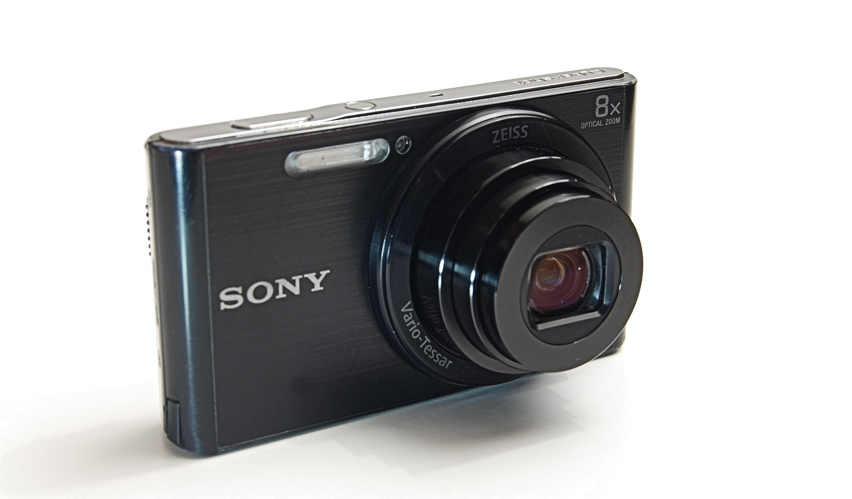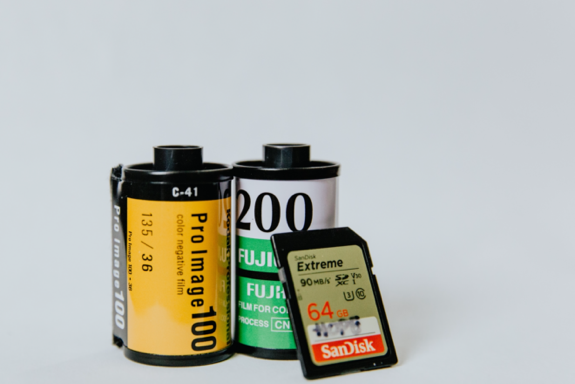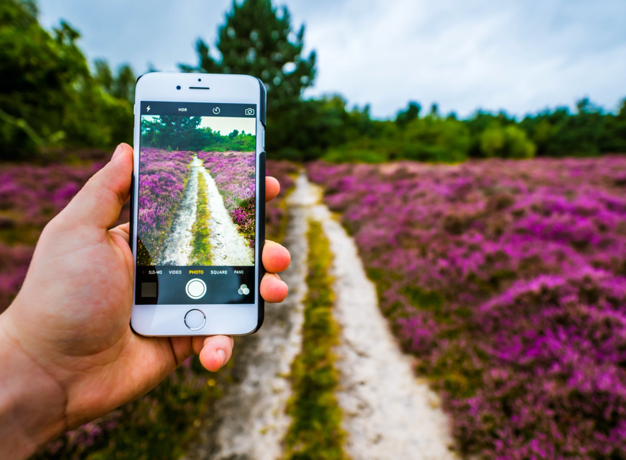In the previous instalment of our photography series, I guided you through all the jargon you need to know when approaching photography. Today I will talk about budgeting and how to navigate the plethora of equipment on offer, another tricky aspect for beginners.
To facilitate your journey through photography, I also interviewed the photographer Ieuan Berry, who works in the shop Camera Centre, located in Morgan Arcade. Ieuan started taking photos when he was around 14 in his hometown, Newport. Eventually, through the contacts he made there, he was recruited to cover the 2016 NATO Summit in 10 Downing Street, and from then on people started telling him to pursue a career in photography. However, he explains, he wanted to study geography, and it was not until the day that he was meant to start his degree that he completely changed his mind and decided to do Documentary Photography instead, and he hasn’t had a single regret on his sudden change of opinion ever since. He happily agreed to answer all the questions I had about the photography industry, and the technical side of image-making. Hopefully, his insight will get rid of your fear to get a camera and start exploring the wonders this medium has to offer!
Budget
Let’s be honest, photography is not the cheapest of hobbies. So, if you really want to commit yourself to it, you will have to accept that you will be spending at least a hundred pounds on the equipment. However, you shouldn’t let this put you off from trying, as most cameras last five years or more (depending on their usage), which makes them a long-term investment.
When it comes to pricing, cameras are a bit like watches: the difference in market choices can be brutal. Just to give you a rough idea, low-end or budget cameras range between ┬ú200 and ┬ú500, and luxury cameras, such as the renowned Hasselblad, can go all the way to ┬ú5,000. Obviously, as a beginner, it would make no sense for you to spend that much. Don’t believe the common narrative: an expensive camera does not equal good photographs. Good photographs can be accomplished with basic equipment, you just need to do your research to find out which one is the best for you, both in price and technical features.
Since you are likely to spend quite a lot of money on your first camera, you should be doing the same amount of research as you would do if you were buying a brand-new phone. Ask yourself what you intend to accomplish with it: Do you want to learn how to take artistic photos? Do you mainly want it for social occasions? Do you want to focus on a specific type of photography, such as sports photography, or nature photography? Once you know the answers to those questions, go to your closest camera store and tell the staff your price range, and what you’re looking for. They’ll be more than happy to help you.
A Brief Note on Compact Digital Cameras

Yes, they are cheaper, and yes, everyone had them back in the 2000s, however, if your aim is to explore the artistic side of photography, this type of cameras won’t offer much to you. The quality of the lenses is not great, and they are quite limiting in terms of what you can actually do with them. Even in the manual shoot mode, it’s likely that you won’t be able to change the shutter speed or aperture, which means that you won’t be able to learn how images change depending on the settings.
Analogue vs. Digital

When doing your research, you should also consider whether you want to get an analogue or a digital camera. In regards to this, Ieuan emphasised that it’s all down to personal choice: “People should consider what type of aesthetics they want to get out of the photographs. To do this, they need to think of the scenarios they are going to be put into, and ask themselves whether an analogue or a digital camera is going to be more practical for the type of photography they want to pursue.”
When it comes to analogue cameras it is essential that you consider the practical issues that comes with it. Remember that once you put the film in a camera, you can’t change it, or see the pictures until you finish it and develop the roll. So, if the type of photography work you are going to be doing requires you to work under tight deadlines, you might be better with a digital camera. However, if what you want is to have a broader understanding of the technical side of photography, analogue is ideal, as it allows you to physically engage with the impact that different settings have on the images.
Additionally, keep in mind that film rolls are not as widely available as they used to be. According to Ieuan, a couple of years ago it was easy to find a 1600 or 3200 ISO film in colour, but now you can only find 800 ISO. So, if you are going to be taking a lot of low-light or night-time shots, you might be better going with digital. This is not to say that film wouldn’t work in dark environments, it would just be harder, and you might need to resort to using the flash on those occasions.
Ieuan said that in his personal experience as a documentary photographer, film is still a massive part of his industry, so he feels somewhat obliged to use it. However, he often takes both a digital and an analogue camera out and uses whichever he thinks adapts better to the image he is trying to take.
Investing in a good lens
Ieuan emphasised that, even though the photographer’s capacity always has more weight when it comes to taking good pictures, a good lens can make a big difference: “Imagine going to Boots and buying a ┬ú5 prescription set of glasses for someone who can’t see properly, it might improve their sight but it’s not going to be 10/10. However, if you spend a bit more on better glasses, their vision could improve considerably.” In the long term, investing on a good lens might be your best choice; the camera glass defines the way in which the light comes in, which consequentially means that the colours will translate more faithfully into the sensor, creating sharper and more realistic images.
Ieuan personal recommendation for beginners is the Canon IOS 4000D with a standard kit lens 18-55mm and 3.5-5.6 aperture. Why? The menu screen is pretty self-explanatory, so it tells you (quite literally) what each button is for, which is an ideal asset to any beginners. Additionally, if you wanted to buy a different lens to the one that comes with the camera, he recommends the classic “nifty fifty”, which is a 50 mm lens with f1.8 aperture. It’s around ┬ú99 if you buy it through the Canon store, or around ┬ú70 if you buy it second hand. The reason why this lens is good to get you started is that it doesn’t allow you to zoom in or zoom out, which subsequently forces you to physically walk forward or backward from your subject, immersing you completely into the photography world, and forcing you to think about composition and framing.
What’s the deal with phone cameras?

Once again, it is important for you to ask yourself what you need a camera for. If you only need to take photos of your friends and family to share on Instagram and Facebook, a phone camera will do. However, if what you want is to take your photography one step further and understand how cameras work, or even start it as a professional endeavour, investing in an actual professional camera might be a shout.
Before interviewing Ieuan, I had the impression that the camera market had experienced a downfall since the emergence of phone cameras, and more specifically, since the launching of really good phone cameras, such as the ones included in the iPhone, Google Pixel and Samsung Galaxy.
However, Ieuan explained, since people tend to ignore the limitations that phone cameras actually have, the opposite has happened: “Phone cameras have a tiny sensor (the size of a grain of rice), so when people try to print out the photos, they don’t look as good as they did on the screen ÔÇô this happens because phone camera photos are designed to look amazing on the phone’s screen, but this doesn’t translate everywhere else. So, by experiencing this, users feel the need to buy an actual camera, because they want to achieve more. Ultimately, their phone has just given them a glimpse into the photography world.”
Where is the world of photography heading to?
To conclude the interview, I wanted to know a bit more about what the future holds for photography in terms of equipment. Ieuan explained that the market seems to be moving beyond DLSR cameras: “This type of cameras have a mirror inside that moves up and down every time you take a photo, so after they reach a certain number of photos, the camera becomes obsolete and you need to replace it. Therefore, mirrorless cameras are the future, as they have improved the mechanism inside, increasing the quality of the images produced.
Ieuan’s final tips
- Don’t let your fear stop you from trying: “The settings of the camera often put people off: ÔÇÿah, I’ve touched something, and now it looks darker’. All you’ve done is change a setting, so you can just press reset and go back to normal.”
- If you want to try street photography, actually go out, approach strangers and ask them if you can take their photo. That way, you won’t only boost your confidence, but it will also help you build a nice portfolio.
- If you are doing studio work, YouTube is your best source of information, there you can find tutorials and step-by-step instructions on how to use different types of lighting equipment.
- Buy some books about photography. (Quench Culture will delve more deeply into this in the next article ÔÇôkeep an eye out for that!)
- Ask other photographers for help, there is nothing wrong with asking if you can come with them next time they go out to take pictures; that way you’ll be able to ask questions on the spot, and see the behind-the-scenes process.
Finally, what makes a good photographer?
As we covered in this article, equipment is a big part of photography, but it is definitely not the only part that defines your ability. Whilst having a good camera can help you accomplish great images, ultimately what will define your capacity as a photographer is your dedication to the medium, and the amount of effort and time that you put into it. To improve, Ieuan remarks, you must be able to both take criticism from external parties and be self-critical enough to analyse your own photographs and pick out the best ones; otherwise, if you fall into the bad habit of being too proud and not accepting any feedback, you’ll get stuck in a certain style and you’ll never really improve.
If you want to check out Ieuan’s photography, you can head to his Instagram page.


